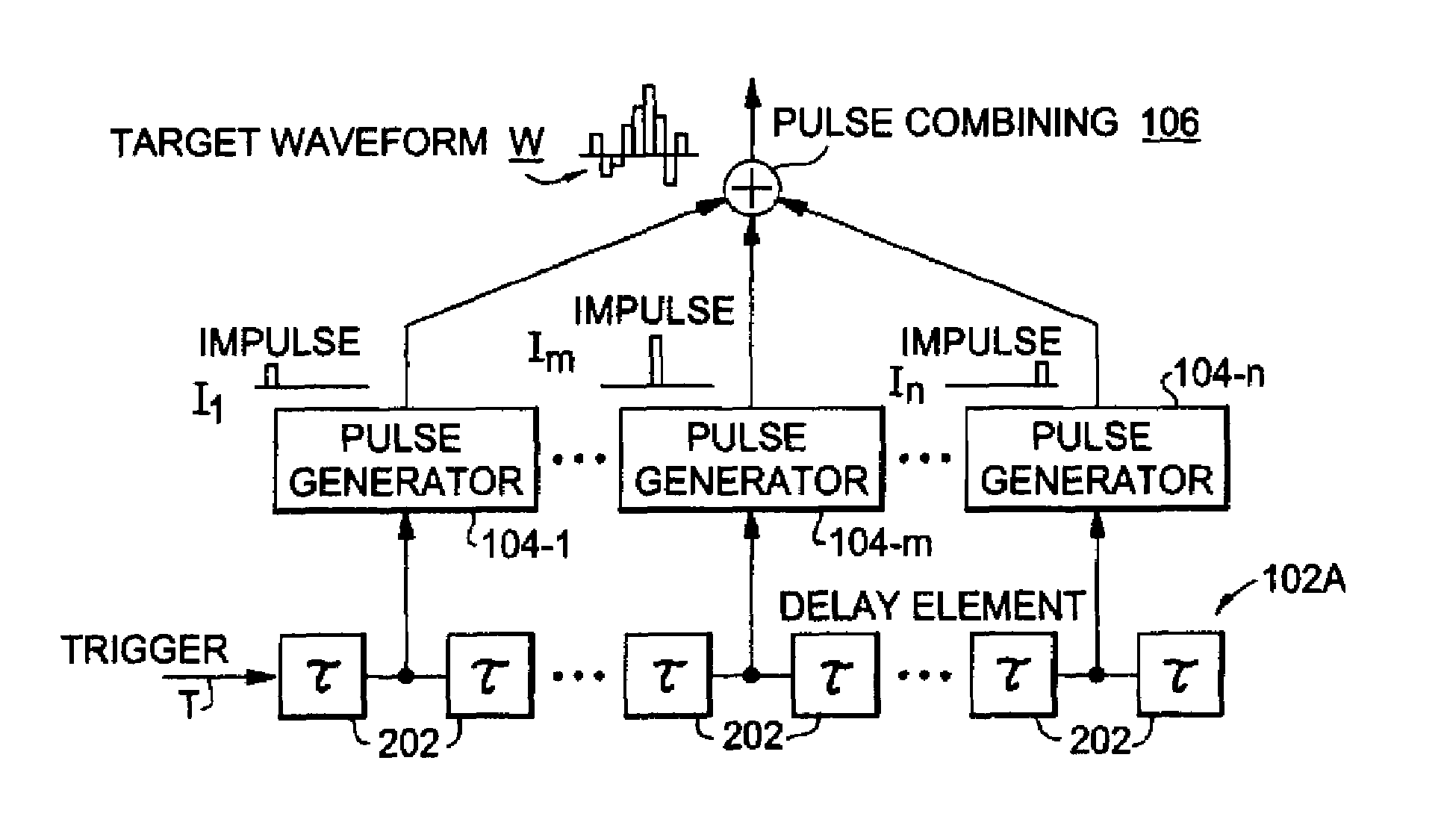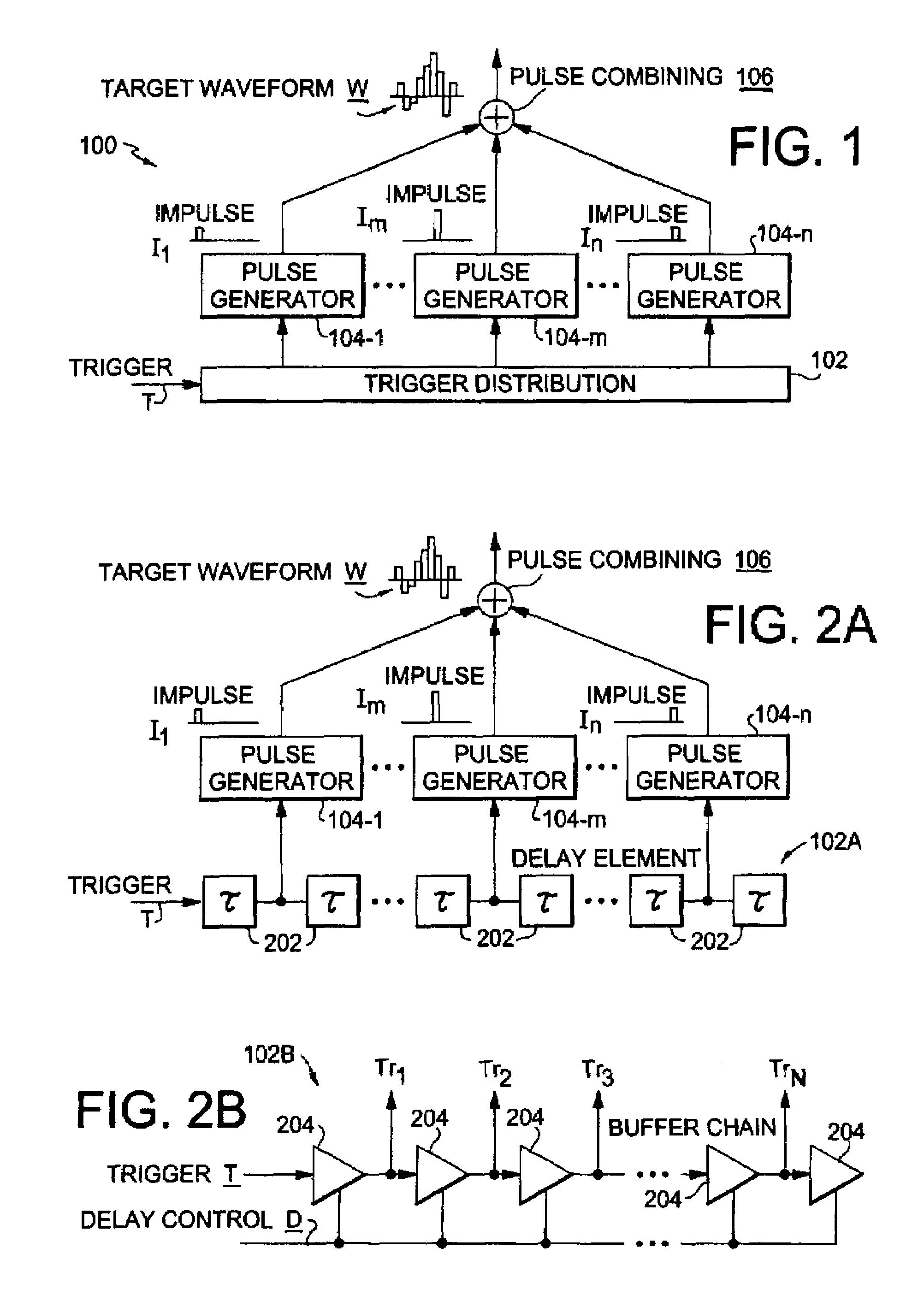Distributed arbitrary waveform generator
- Summary
- Abstract
- Description
- Claims
- Application Information
AI Technical Summary
Benefits of technology
Problems solved by technology
Method used
Image
Examples
Embodiment Construction
[0023]Preferred embodiments of the present invention will be set forth in detail with reference to the drawings, in which like reference numerals refer to like elements throughout.
[0024]FIG. 1 is a block diagram showing a distributed arbitrary waveform generator (DAWG) 100. A trigger signal T is input to a trigger distribution network 102, whose design will be explained below. The trigger distribution network 102 distributes the trigger signal T to a plurality of pulse generators 104-1, . . . 104-m, . . . 104-n, which produce impulses I1, . . . Im, . . . In shaped in a manner to be described below. The pulses are combined by a pulse combining circuit 106 to produce the target waveform W.
[0025]Various implementations of the trigger distribution network 102 are shown in FIGS. 2A-2D as 102A, 102B, 102C and 102D. The trigger distribution network can be implemented as a delay line 102A with delay elements 202, as shown in FIG. 2A. Since it does not require large bandwidth, an active dela...
PUM
 Login to View More
Login to View More Abstract
Description
Claims
Application Information
 Login to View More
Login to View More - R&D
- Intellectual Property
- Life Sciences
- Materials
- Tech Scout
- Unparalleled Data Quality
- Higher Quality Content
- 60% Fewer Hallucinations
Browse by: Latest US Patents, China's latest patents, Technical Efficacy Thesaurus, Application Domain, Technology Topic, Popular Technical Reports.
© 2025 PatSnap. All rights reserved.Legal|Privacy policy|Modern Slavery Act Transparency Statement|Sitemap|About US| Contact US: help@patsnap.com



